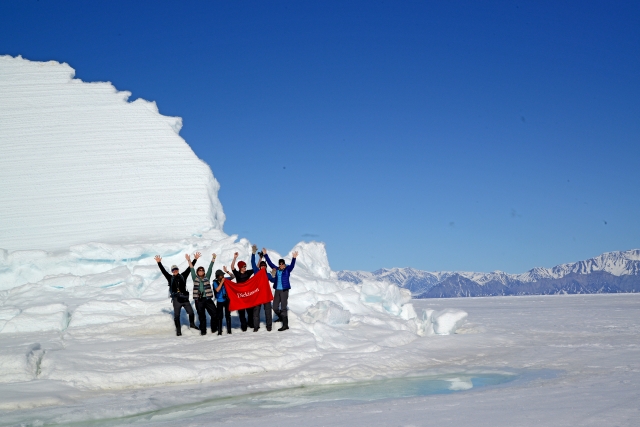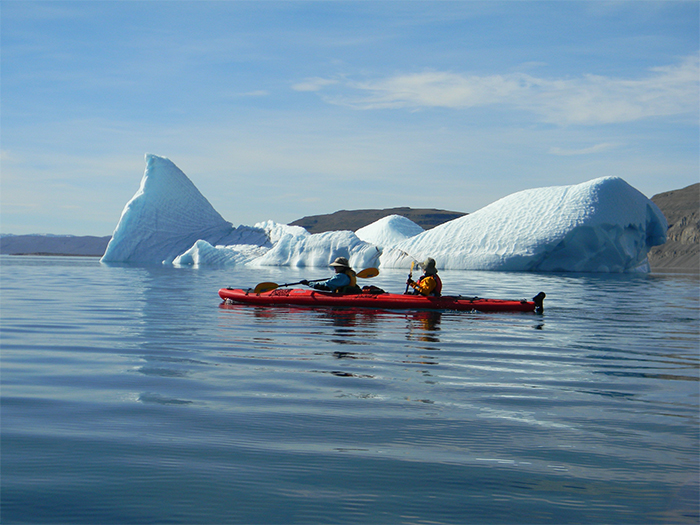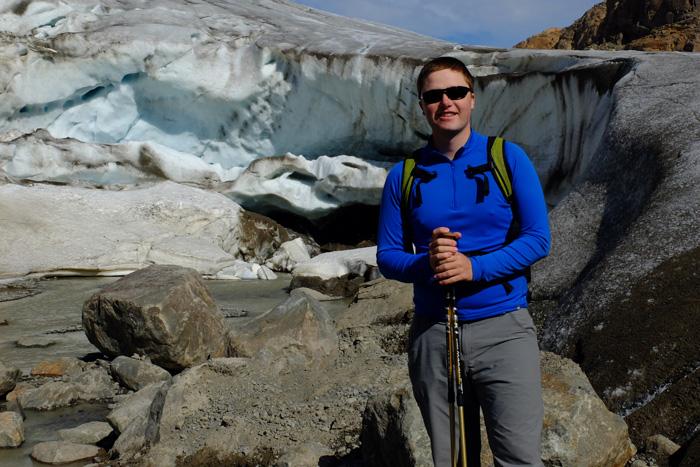Arctic & Alpine Climate Change Program Heats Up

Distinctive Dickinson program continues to grow
by MaryAlice Bitts-Jackson
The Arctic is heating up—literally, in the form of melting ice caps, and figuratively, as geopolitical tensions ramp up, countries and organizations vie for the Arctic’s natural resources and scientists and advocates race to study and protect its fragile ecosystem. And Dickinson students have a finger on that pulse.
Through Dickinson’s distinctive Arctic & Alpine Climate Change Research program, students can experience the jaw-dropping natural beauty of these largely unspoiled regions and witness the effects of a warming planet up close. Even more important: They contribute to our wider understanding of the Arctic and the natural environment as a whole.
A decade after the trip that started it all, here’s a look at how the program has grown.
The program kicks off

Baffin Island, Canada, 2013.
Dickinson’s first Arctic student-faculty research team traveled to Arctic Canada in 2013, with funding from alumni couple Susan Wyckoff Pohl ’80, P’06, and John Pohl ’78, P’06. Alumni-funded geosciences fieldwork trips to Greenland, Iceland, Alaska and Canada followed, offering students a chance to measure sea-ice thickness, use GPS technology to document glacier sizes and fly drones to map volcanoes. In 2017, again with the Pohls' support, Dickinson expanded the program to include two Arctic student-faculty trips each summer.
As they conducted hands-on original research, the students practiced innovative, resourceful and conscientious problem-solving—and enjoyed high-level experiences rarely afforded to undergraduates. Some presented their findings at national and international scientific conferences. The research continued remotely during the COVID-19 pandemic years, as students used GIS technology, satellite images and aerial photos to explore Canadian glaciers and measure the effects of climate change.
And in 2020, the college formalized the program with permanent funding and installed the Arctic and Alpine program’s first Moraine Chair. That honor is held by Professor of Geosciences Ben Edwards, who’s led the Arctic fieldwork trips since 2014.
Building momentum

In that role, Edwards teaches the program’s introductory course every semester. He also works closely with Associate Professor of Environmental Studies Kristin Strock to grow the program and deepen its partnerships. And grow it has: Due to surging demand, Edwards has already raised the enrollment cap for the intro course from 15 to 25.
Dickinson’s Arctic research alumni are already incorporating Arctic studies into postgraduation work in biology, chemistry, engineering, science writing, education and policy. For example, Madie Ritter ’19 is pursuing a graduate degree on microbial and greenhouse-gas research, an area she was introduced to through an Arctic research trip. Will Kotchkitzky ’16 (pictured above), a four-time fieldtrip veteran, is an assistant professor of geosciences at the University of New England in Maine. He continues to research glaciers in the High Arctic.
As Kochtitzky notes, it’s a far-reaching area of study, and it’s critical to us all, since warming in the Arctic leads to widespread changes in weather systems and rapid sea level rise. “If we want to understand our planet, we have to understand the Arctic,” he says.
Hands-on and impactful
Though it originated in the geosciences department, the program is interdisciplinary. A faculty study group, led by Edwards and Strock, is investigating new ways to fold Arctic- and Alpine-related material into a range of courses.
As Edwards notes, these include courses in the arts, as several studio art faculty members have worked in or traveled to Nordic countries and to Alaska; the Trout Gallery additionally includes Arctic works in its permanent collection. Arctic and Alpine issues also dovetail naturally with Dickinson’s hard- and social-science, environmental studies and security-studies curricula and with the college’s master’s program in managing complex disasters, the Copenhagen study-abroad program and the work of Dickinson’s Center for the Futures of Native Peoples and EcoLeague.
Strock predicts that demand for interdisciplinary thinkers working on Arctic issues will keep building, as issues in the Arctic continue to become more pressing and complex.
“Dickinson, and its liberal-arts approach to Arctic studies, can foster the kind of interdisciplinary work that creates a different kind of knowledge,” Strock says. “It goes beyond putting experts of various fields in the same room to share findings: Our students can look for connections and cross barriers to make sure we’re studying sociological and ecological Arctic systems as a whole, instead of just as a sum of their parts.”
TAKE THE NEXT STEPS
Published October 25, 2023